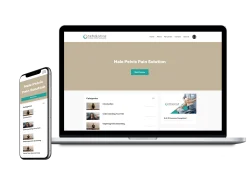If you’re struggling with chronic elbow pain—especially that stubborn, nagging discomfort on the outside of your elbow—you’re not alone. Whether it’s from a racket sport, long hours of typing, gardening, or even just everyday activities, tennis elbow (also known as lateral epicondylitis) can become a debilitating, frustrating condition that just won’t go away. You may have tried the usual treatments: physical therapy, braces, icing, even injections—only to see temporary relief, if any. So what are you missing?
It turns out the answer may lie not just in your elbow, but in your entire body. Let’s explore what’s really going on with chronic elbow pain and why it might be time to rethink your approach to healing.
Understanding Tennis Elbow: What’s Really Happening?
Tennis elbow is a condition caused by repetitive overuse of the forearm muscles, particularly the extensors, which are responsible for lifting the wrist and fingers. These muscles originate at the outer part of your elbow, and overuse leads to microtrauma in the tendon where these muscles insert into the bone.
Initially, the injury might be acute—with inflammation, pain, and tenderness. But for many people, the pain becomes chronic. This means the injury is no longer just inflamed; the tendons have developed tiny tears, scar tissue, and long-term stress that never truly heal.
Common triggers include:
- Playing racket sports like tennis or pickleball
- Gardening with hand tools
- Cooking, chopping, or other gripping activities
- Working long hours at a computer or typing all day
If this sounds familiar, you’ve probably already tried the typical approaches:
- Wearing a forearm brace (which helps redistribute tension)
- Icing the elbow to reduce inflammation
- Seeing a physical therapist or chiropractor
- Possibly even getting steroid injections
Yet, the pain persists.
The Missing Link: It’s Not Just Your Elbow
Here’s the problem: conventional treatment often looks at just the elbow. But your elbow isn’t acting alone. It’s part of a complex, interconnected kinetic chain—a system of muscles, tendons, and fascia that extends from your fingertips all the way to your upper back, neck, and head.
When any part of that chain is out of balance, it can place extra stress on the elbow, causing overuse injuries like tennis elbow to flare up again and again.
Let’s break it down.
The Kinetic Chain: How Your Whole Body Affects Your Elbow
Muscles from your hand, forearm, upper arm, shoulder, chest, and neck all work together. If there’s tightness, weakness, or poor alignment in any part of this chain, the elbow often compensates, becoming the weak link that bears the load.
Common Issues Along the Chain:
- Tight neck and shoulder muscles from poor posture
- Weak upper back muscles from prolonged sitting
- Restricted movement in the pectoral (chest) muscles
- Imbalanced forearm or wrist strength
- Poor fascial mobility throughout the arm and torso
All of these factors affect how force is transmitted during movement. When one part of the chain is tight or misaligned, your elbow works harder—leading to inflammation and pain.
Why Traditional Therapy Often Falls Short
Traditional physical therapy often emphasizes strengthening exercises for the elbow and wrist. While this can be beneficial, it often fails to correct the root cause if your posture and alignment are off.
Strengthening an area that’s already imbalanced can sometimes make things worse. Tight muscles don’t function efficiently—they’re also weak. If you train them in a misaligned state, you reinforce poor movement patterns.
What’s needed is a foundational reset: first, identify and correct imbalances. Then, strengthen once everything is properly aligned.
A Holistic Approach to Chronic Elbow Pain
The key to lasting relief lies in addressing the whole kinetic chain—not just the pain point.
Step 1: Localized Treatment
Targeting the elbow directly is still important, especially in long-term cases. Techniques may include:
- Cold laser therapy to reduce pain and inflammation
- Dry needling to increase blood flow and relax tight areas in the tendon
- Manual therapy such as cupping, Graston, or active release to address fascial adhesions
- Supportive bracing and icing during flare-ups
Step 2: Addressing Postural and Muscular Imbalances
Next, it’s crucial to correct the root imbalances in the surrounding muscle groups:
- Releasing tight neck and shoulder muscles
- Mobilizing the chest and upper back
- Restoring proper movement and strength in the shoulder blade and arm
- Realigning posture to ensure neutral positioning of the neck, spine, and shoulders
Step 3: Fascial Release and Integration
Fascia is the web of connective tissue that wraps around every muscle and structure in your body. When it becomes tight or restricted, it affects how your muscles move and interact.
Using fascial release techniques to open up restrictions from the head and neck all the way to the hand ensures that no single muscle group is compensating too much—especially the extensors of the elbow.
Why This Works: Rebalancing for Long-Term Relief
When your body is balanced, your muscles work together, sharing the load. No one group is overworked. This means your elbow doesn’t have to compensate for tight shoulders, a weak back, or a collapsed chest.
Once these imbalances are corrected, and movement patterns are retrained, the pain starts to subside, and the likelihood of recurrence drops significantly.
Not Just a Quick Fix
It’s important to understand that healing chronic elbow pain isn’t about chasing symptoms—it’s about fixing the system. And that means:
- Taking time to assess the whole body
- Applying therapy not just locally but across the chain
- Being consistent with corrective strategies
- Avoiding one-size-fits-all group rehab settings
Working one-on-one with a therapist who understands this approach can be a game-changer.
What to Do If You’re Ready for Relief
If this article resonates with you—if you’ve done everything “right” and still can’t shake your elbow pain—it may be time to take a new approach.
Whether or not you’re near a specialized clinic, seek out a therapist who understands the kinetic chain and works holistically. Even one thorough consultation can help identify the underlying issues you haven’t yet addressed.
Relief is possible—but only when you stop treating the elbow like it exists in isolation. The body is connected. It’s time your treatment plan reflected that.
Final Thoughts
Chronic tennis elbow doesn’t have to be your norm. But recovery requires more than just treating symptoms. It demands a thoughtful, body-wide approach that restores balance, improves posture, and rewires movement patterns from head to hand.
Stop focusing only on your elbow. Start looking at the bigger picture—and that’s when real healing begins.
Also Read: The Real Reason Sex Hurts—and How to Fix It
I’m Hina Sheth. I have been treating complex orthopedics, sports and pelvic floor physical problems for over 25 years with amazing results. Now I want to bring my knowledge to the global community so I can spread my knowledge to you.
Our bodies are complex systems of 600 muscles and organs intertwined in a fascial system that all work together. Imbalances in this system such as trigger points, visceral and myofascial restrictions can lead to joint, pelvic, and organ issues.
Factors like nutrition, exercise, sleep, and stress play a crucial role. Unfortunately, our current healthcare model does not look at our bodies as a whole and oftentimes compartmentalize musculoskeletal injuries and dysfunctions.
At Rebalance, our goal is to holistically treat this complex system to restore harmony in the body. By addressing these imbalances, we help clients improve their overall health and well-being. Our vision is to empower individuals to create a healthier lifestyle for themselves.






